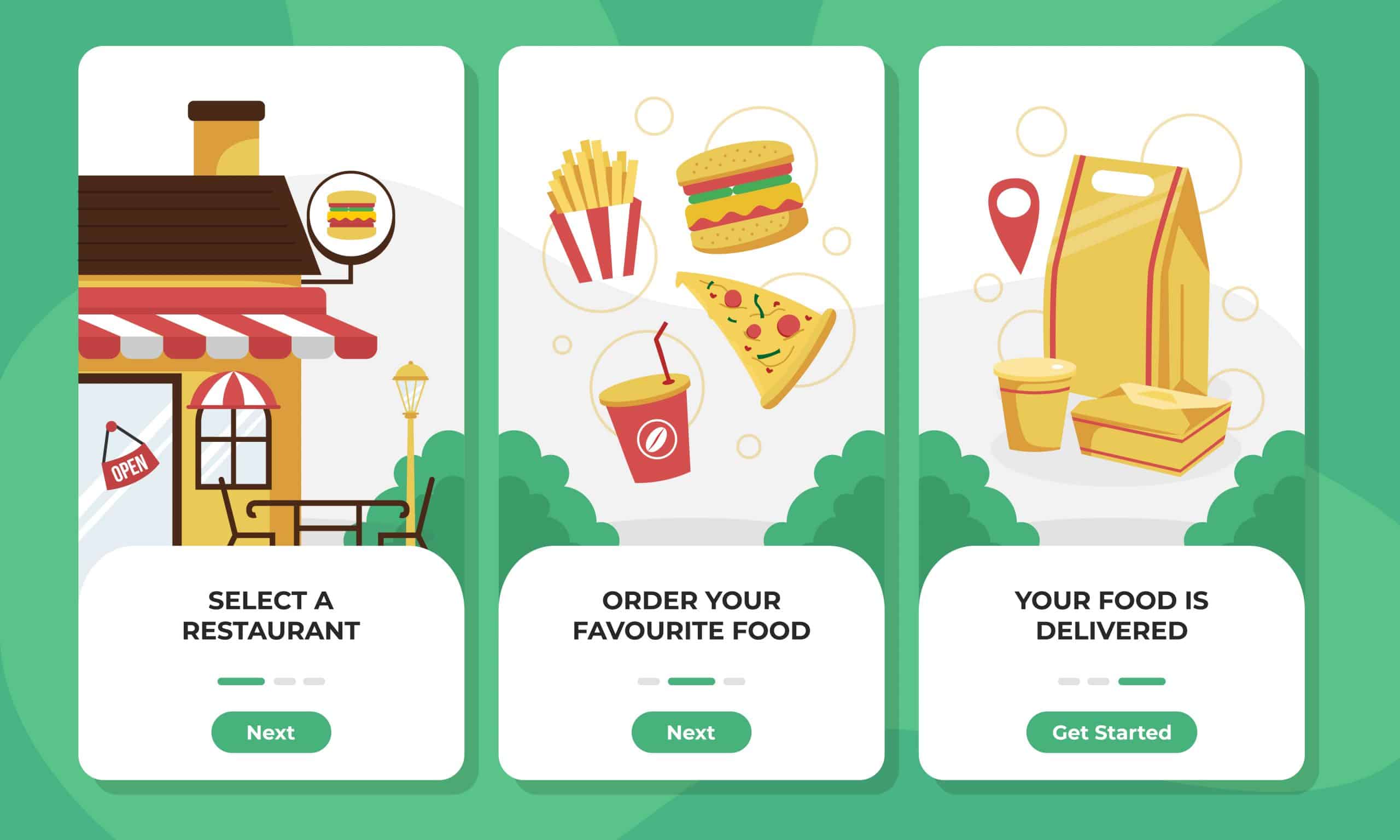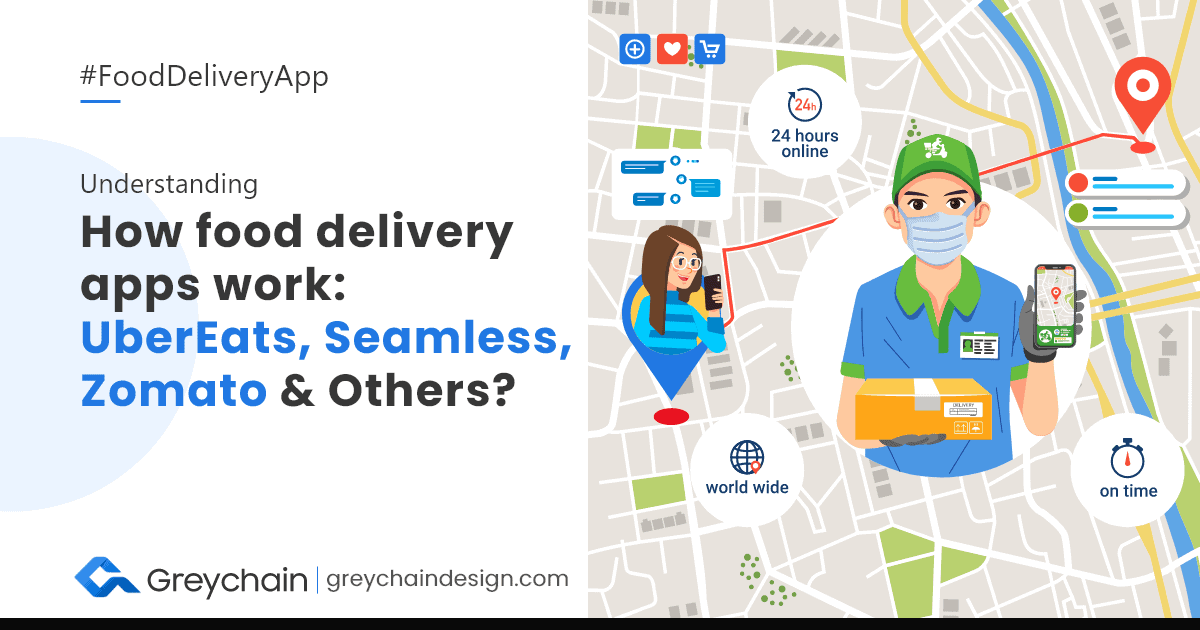Online food delivery applications have gained a lot of popularity in recent years; especially during the pandemic. These online food delivery apps provide an immense convenience to the consumers as anyone can order food from their favorite restaurants, even without going out. The platform supports various food businesses to streamline their operations and provide more benefits to the consumers.
These food ordering apps have proved to be a handy tool for the food chain businesses; managing orders, delivery and complaints. Consumers can explore different restaurants, review menus and make an order, all from their mobile devices. The new way to order food is highly appreciated by everyone!
Mobile app development solutions play a major role in business digitization that open another door for the users. A simplified food ordering mobile app design attracts more clients and helps enterprises to gain high revenue. With the high demand and steady growth, restaurants are getting their own mobile app to supply food service or using platforms like UberEats, Zomato and Jumia app.
So, how does food ordering technology work?
![]()
To understand the workflow, we have categorized the process into 3 parts: Customer, Restaurant and Delivery partner. Let’s learn about the specific functionalities below:
For Customers:
- Sign-In with delivery details
- Browsing restaurants’ menu and reviews
- Placing an order
- Making the payment for the selected food
- Tracking food with estimated delivery time
- Sharing feedback after receiving the order
- Review past order anytime from the account
For Restaurant:
- Food listing and updating the menu (food items and prices)
- Action on received order (confirm or reject)
- Assigning food to members for preparation
- Delegate orders to drivers or delivery partners
- Manage billing and order details
For Delivery Partner:
- Registering as a partner
- Receiving orders
- Manage order details
- Delivery of food (using navigation)
- Completing the order
Key ingredients used to make a food delivery application:

1) Customer App:
- Search and explore: The consumers should have an option to comparatively look into different restaurants and menus to choose the best offers. The aim is to display the cuisines from different locations all at one place, to make the order experience convenient for the customers. Let them order from the top-rated restaurants.
- Order placing: It is imperative to provide a comfortable platform to users so that they can effortlessly place an order. An easy-to-use platform will attract users of different age groups and different tech skills; you don’t need to be tech-savvy to order your food. Besides, there should be proper selections to add or discard any item from the order. Many users tend to change their mind after their actions; hence an order cancellation is also required.
- Eat list or Favorite: Positively, there are people who start planning their weekend menu from the first day of the week. Adding your desired food items to the favorite list will certainly remind you to order them on dine day. Besides, you can pin your loved restaurants in the app; no need to find them from a diverse range of restaurants.
- Real-time order tracking: It is not just ordering the food from the mobile application, but consumers can also keep an eye on every further step taken on their order; from food preparation to delivery. The in-app GPS system will assist to track the delivery partner till the order reaches the doorstep.
- Payment system: It is beneficial to have a variety of payment systems so that every user can pay as per their comfort; credit card, netbanking, COD etc.. Besides, it has to be quick, facile and secure.
2) Restaurant App:
- Managing information: The restaurant manager is liable to update the food chain details, menu, pricing and other info. The data is the face of your restaurant that encourages people to order your food online.
- Managing customers’ order: Restaurants receive order information at their backend from the user; when users make an order. The information contains name, address and order details. The restaurant team reviews the data and prioritizes the order accordingly.
- Tracking deliveries: Restaurant managers can actively track the different orders sent out for delivery. They can review all the delivery agent activities through this admin panel (location, delivery time etc.).
3) Delivery Partner or Driver App:
- Registration: An easy and comfortable sign-up for drivers is a considerable option to get more partners on board. An identity proof and minimal important information will certainly work. A user may use their existing email account to get started and keep a username and password for app login.
- Receiving Orders: A sound alert or order notification on the phone will inform the drivers about new orders. Once confirmed, they can use the app to notify the restaurant about the confirmation, and pick the order on time. They may also update their availability status (online/offline) so they don’t waste an order.
- Delivery Information: The delivery information should contain precise details of the delivery address and the consumer, so that they can reach the destination. If required, they may contact the customer from the app for any queries.
- Orders and Payment Summary: Partners can view all their managed orders from this section. They can review all their hard work, which will help drivers to calculate their daily/weekly earnings. This encourages them to take more orders and grow their remuneration.
Innovative features to include in your on-demand food delivery app (pandemic effect):
[A] Contactless delivery: Amidst pandemic, things have changed a lot and so has the interaction with people. Contactless delivery comes with a safety layer that follows the social distancing and enhances hygiene. Hence, leaving the orders at the doorsteps with extra packaging is the future delivery protocol. This immensely builds trust between the restaurant and the consumers.
[B] Free Delivery: Somewhat like a marketing strategy, a free delivery will make a lucrative deal. This shows that the restaurant is contributing towards its clients and has them enjoy the food at the same price of the restaurant.
[C] Special Meal Combos: It’s not just business, but a food operating enterprise also takes care of the needy ones; by providing special combos or meal packages at low price. This is highly helpful during any pandemic or in flu season.
Let’s talk about food delivery app development:
There are different technologies to be used: Native, Hybrid and Cross-platform applications. It depends on the expertise and functionalities of the app that we are looking to develop. In addition, there is a fine process; from market research to testing, and making the app live on the app stores.
As estimated, for iOS app development and Android app development, each platform takes around 200 to 250 hours in total.
To know more about food delivery apps, check out our another blog: How to make food delivery apps like GrubHub, Uber Eats, Doordash?
Conclusion:
For any emerging restaurant or food chain, it is integral to understand the market and target audience. A fine food delivery app is a resource to consumers that fits their schedule and technical knowledge; it should be user friendly and provide a comfortable interface.
If you understand the need of a mobile app for your food delivery functions and are looking for trusted mobile app development services, GreyChain Technology is the destination. We are one of leading web and mobile app development companies in the US, assisting hundreds of clients worldwide.
Our team of developers deal in the latest technologies to build specific apps for your business.
Get in touch with us using the contact form or send us your details via email at sales@gcdev.greychaindesign.com.
Let’s utilize the technology for fruitful business operations.

